All the places
The authorities of the South Korean city of Incheon, not far from which, during the Russian-Japanese war, the cruiser Varyag and the gunner Koreyat took an unequal battle, handed over the flag of the legendary cruiser to the Russian side. The ceremony was held in the presence of President Medvedev, who is visiting the country. According to him, this event has a symbolic meaning.
In the Russian embassy in Seoul, in the presence of Russian President Dmitry Medvedev, a ceremony was held to hand over the legendary cruiser Varyag to the Russian side of the South Korean city of Inchon Gyuys (naval flag).
The head of the Russian state called it a significant event. “The transfer of Huys from the Varyag cruiser to us has a special symbolic meaning, because it is a memory of the unparalleled feat of the sailors of the Varyag cruiser, on the one hand, and on the other, it is a symbol of new, very good relations that bind the Russian Federation and the Republic of Korea ", - said Medvedev, ITAR-TASS.
He expressed gratitude to the mayor of Incheon for the decision, noting that the fact that this happens during the visit of the President of the Russian Federation adds a special symbolism to the transfer process.
“Taking today the guis from the Varyag cruiser, we pay tribute to the heroic deed of our sailors and, on the other hand, try to show that in any life there is a place for heroic deed, and we hope that the appropriate storage to be carried out with us, will enable the younger generations of Russians to also be guided by what was done by their ancestors many years ago, ”said Medvedev.
 Incheon Mayor Son Yon Gil noted that 100 years ago in the bay in Incheon (formerly the port of Chemulpo) an important battle took place, the citizens of the city carefully kept the flag that witnessed the fight.
Incheon Mayor Son Yon Gil noted that 100 years ago in the bay in Incheon (formerly the port of Chemulpo) an important battle took place, the citizens of the city carefully kept the flag that witnessed the fight.According to him, “the decision on the transfer for a period of five years to the Russian Federation’s geys” was taken in connection with the visit of the Russian president to the Republic of Korea and with the approval of the president of the Republic of Kazakhstan.
According to the rules adopted in South Korea, any museum piece can be transferred to another country only if the country's president agrees and is on lease terms.
The Russian side expects that every five years the lease will be extended.
After the speech by the President of the Russian Federation and the Mayor of Incheon, the Commander-in-Chief of the Navy, Vladimir Vysotsky, and the director of the Incheon Museum, So Gwan Sok, signed an act of transferring the guis. Then the honor guard of the Varyag Guards missile cruiser, which is now visiting Inchon, received the guis from the hands of Korean sailors. As the deputy commander of the rocket ships connection, captain of the first rank Vladimir Piskaykin, told reporters, before making a decision on the place of storage of the flag, the guis will be in the museum of the Varyag rocket cruiser. It is planned that in a few days the ship, assigned to the city of Fokino in 130 kilometers from Vladivostok, will go home, reports RIA "News».
According to Piskaykin, it would be logical if Guys were transferred for permanent storage to the Central Naval Museum in St. Petersburg.
At the beginning of the Russian-Japanese war 1904 – 1905, the cruiser Varyag and the gunboat Koreyets were stationed at the Russian embassy in Seoul at the port of Chemulpo. Other ships, including England, France and the United States, were also located there.
Japanese squadron of Rear Admiral Uriu 26 January 1904, blocked Chemulpo, trying to cover the landing and prevent the intervention of "Varyag".
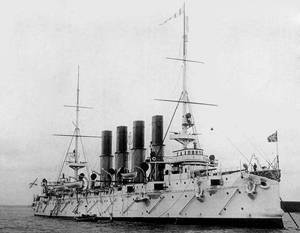 Varyag captain Vsevolod Rudnev received an ultimatum from Uriu, demanding to leave the port before 12 hours under the threat of attack. Rudnev decided to break through with the battle at Port Arthur, and in case of failure - to blow up the ships. At noon, "Varyag" and "Korean" left Chemulpo. When leaving the port at a distance of 10 miles, the ships met a Japanese squadron, which was located behind the island of Yodolmi. The battle lasted 50 minutes. During this time, “Varyag” fired 1105 shells at the enemy, and joined the battle at the end of the battle, “Korean” - 52. According to the commander’s report, one destroyer was sunk from the Varyag with fire and four Japanese cruisers were damaged. The Japanese lost about 30 people killed and about 200 - wounded. The ships returned to the port of Chemulpo, where they received an ultimatum from the Japanese to surrender, but the sailors rejected it. According to the decision of the officer council, “Varyag” was flooded, and “Koreyets” was blown up.
Varyag captain Vsevolod Rudnev received an ultimatum from Uriu, demanding to leave the port before 12 hours under the threat of attack. Rudnev decided to break through with the battle at Port Arthur, and in case of failure - to blow up the ships. At noon, "Varyag" and "Korean" left Chemulpo. When leaving the port at a distance of 10 miles, the ships met a Japanese squadron, which was located behind the island of Yodolmi. The battle lasted 50 minutes. During this time, “Varyag” fired 1105 shells at the enemy, and joined the battle at the end of the battle, “Korean” - 52. According to the commander’s report, one destroyer was sunk from the Varyag with fire and four Japanese cruisers were damaged. The Japanese lost about 30 people killed and about 200 - wounded. The ships returned to the port of Chemulpo, where they received an ultimatum from the Japanese to surrender, but the sailors rejected it. According to the decision of the officer council, “Varyag” was flooded, and “Koreyets” was blown up.Having lain at the bottom of the Yellow Sea for more than a year, the "Varangian" was raised, repaired and entered into the Imperial fleet Japan under the name "Soy." In 1916, Russia bought a ship from Japan for 4 million yen.
At the beginning of the 1917 of the year, Varyag went to England, to Liverpool's ship repair docks for repairs, where he stood up to the 1920 of the year. The money for its repairs was never allocated, and in the end the ship was sold for scrap in Glasgow (Scotland). Following in Glasgow in tow through the Irish Sea, the ship hit the storm and boarded the rocks. All attempts to save the ship were unsuccessful. In 1925, the cruiser was partially dismantled on site, and the 127-meter hull exploded.
The current Varyag, the successor of the first-generation legendary ship of the same name, is armed with a powerful multipurpose attack missile system, which makes it possible to hit surface and ground targets at a considerable distance. Also in its arsenal are rocket bombs, torpedo tubes and several artillery systems of various caliber and purpose.
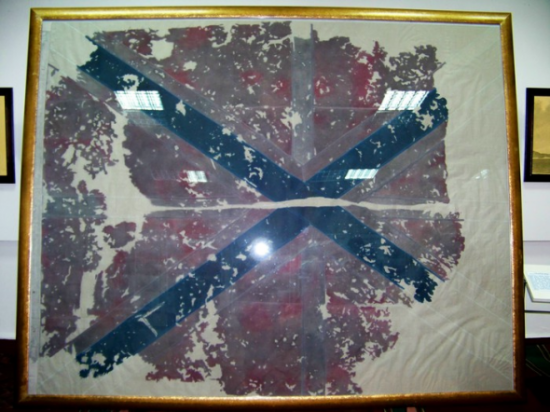
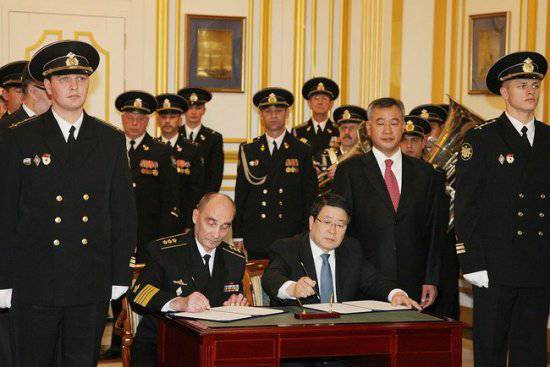
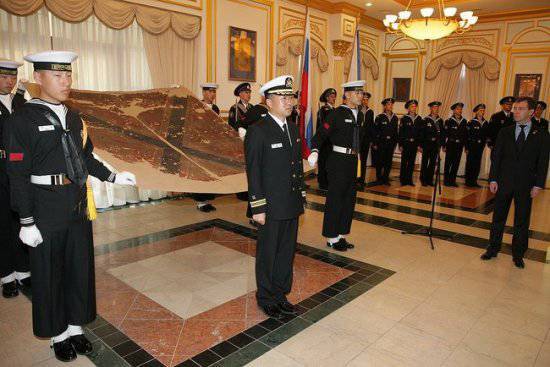
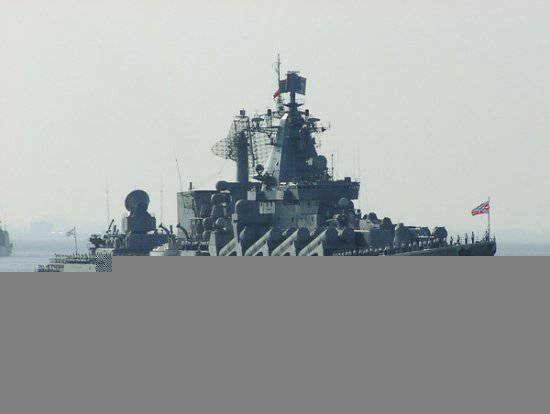
Information